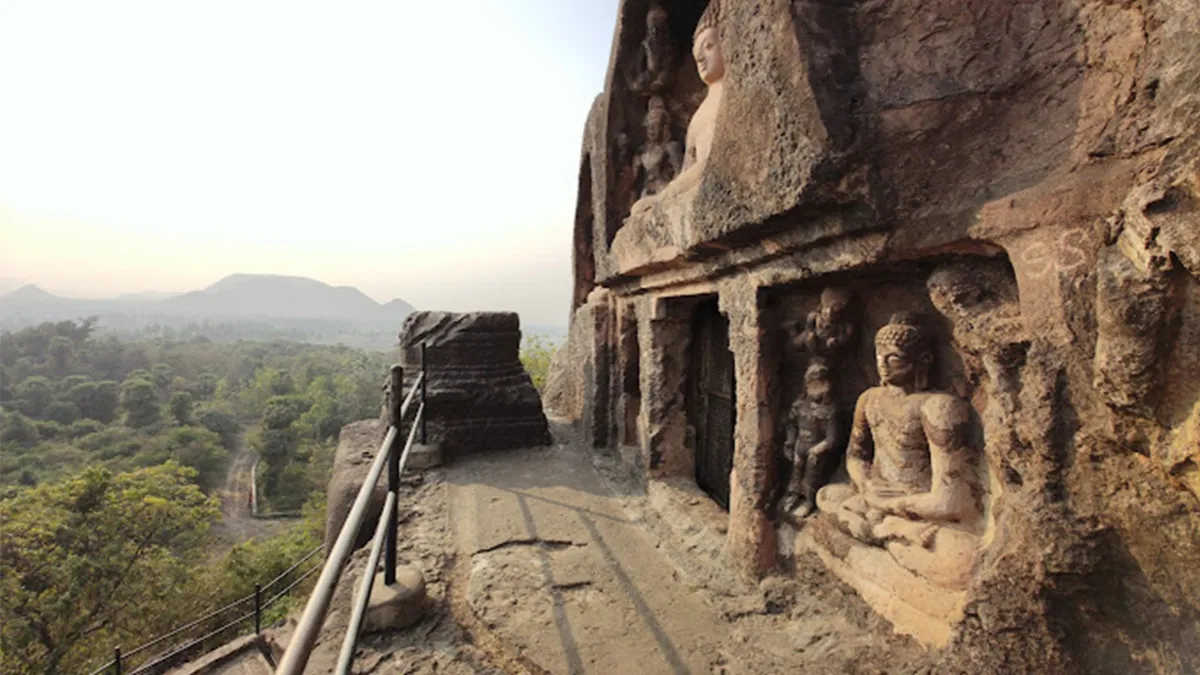Central government has sanctioned ₹7.30 crore for taking up landscaping and development of tourist amenities at Bojjannakonda
30 Sep 2023
News
According to the ambitious plans of the Central and State governments, the centuries-old Bojjannakonda will likely draw tourists from all over the country as well as from countries where Buddhism is still practised, such as Bhutan, Singapore, Thailand, Sri Lanka, Cambodia, and Myanmar. Recently, the Archaeological Survey of India (ASI), which is in charge of Bojjannakonda, received a 7.30 crore sanction from the Central government for landscaping and the development of tourist amenities. In return, the State government has given permission for the construction of a meditation centre and landscaping on a 2.5 acre plot next to the Buddhist heritage site.
Minister for Industries and Information Technology Gudivada Amarnath, YSRCP Regional Coordinator Y.V. Subba Reddy, and Anakapalle MP B.V. Satyavathi recently set the cornerstone for the construction of a Buddhist interpretation (meditation) facility and landscaping of the neighbouring property. Other ideas include for building an arch on the road leading from the National Highway to the Buddhist heritage site, enhancing the Yeleru canal bund, which runs near by, and creating a 'light and sound display' that would highlight the site's historical significance.
Bojjannakonda is being visited by around 5,000 and 8,000 tourists on a monthly average. "The tourist amenities to be developed at the adjacent site include the parking area, illumination, restaurant, an AV room to screen documentaries on Buddhism, and development of a light and sound show," Korada Ashok, District Tourism Officer, Anakapalli, said. People from neighbouring villages swarm to the spot during holidays like Sivarathri. Visitors from outside, particularly Sri Lankans working at Brandix in Atchutapuram, come to see the site, he said.
For the advantage of elderly people climbing the hill in the past, the ASI had installed metal rails and lighting along the stone stairs going up to the cave and the mountaintop. According to reports, "this year, the ASI has proposed public amenities like improvement of the lavatory building and development of pathways between two hillocks at the monument site, aside from conservation of stupas, at an estimated cost of 32 lakh."
The site, which is around 3 km from Anakapalle town and 40 km from Visakhapatnam city, was unearthed in 1906 under Alexander Rim's direction. At the site, ceramics, coins from the Andhra Satavahanas, copper coins from the Chalukya ruler Kubja Vishnu Vardhan, and a gold coin from the Samudra Gupta era were found.
Bojjannakonda's display of characteristics from all three periods of Buddhism—Hinayana, Mahayana, and Vajrayana—is an intriguing aspect. Additionally, a statue of a Buddhist monk named Harati and a figure of "Kalabhairava" with the head of Lord Ganesha wearing conch shells have been discovered there. On the hill, there is a sizable double-story cave accessible by stairs. The gateway and 'dwarapalakas' on either side of the rectangular cave are there. In the middle of the cave is a rock-cut stupa that is perched on a platform that is square in shape. On the northern side of the hill, there are a number of monolithic buildings perched on rock platforms and caves carved out of the rock. The rectangular gateway to the top cave is flanked on either side by statues of the Buddha. The major draw for travellers in Bojjannakonda is the enormous statues of the Buddha, both standing and seated in meditation. A set of functional buildings and a vihara (monastery), which is in ruins, can be found on top of the hill. Another hilltop, Lingalakonda or Lingalametta, is situated to the west of Bojjannakonda. On the summit of this mound, a number of monolithic and structural stupas may be seen. According to historians, Veera Saivas (followers of Lord Shiva) are supposed to have cut off the top of the stone sculptures, which resembles an umbrella, in an effort to portray themselves as Siva Lingas. It makes sense why people still mistake these buildings for Siva Lingas nowadays.
Around 2,000 years ago, Buddhist monks used to meditate atop the hill. It was once known as "Buddhuni konda" (hill of the Buddha), but over time it came to be known as "Bojjannakonda." According to Buddhist monks, the Barabodur Buddhist temple in Java was built in the same style as the buildings on Lingalametta. Perhaps a distortion of the Buddhist term "Sangraha," it is also known as "Sankaram."
On Kanumu day, the final day of Pongal in January each year, residents of the nearby villages congregate in huge numbers to celebrate a holiday known as "Theertham." People from the nearby villages also visit the spot on significant occasions like Buddha Purnima, "Karteeka Masam," and others.
